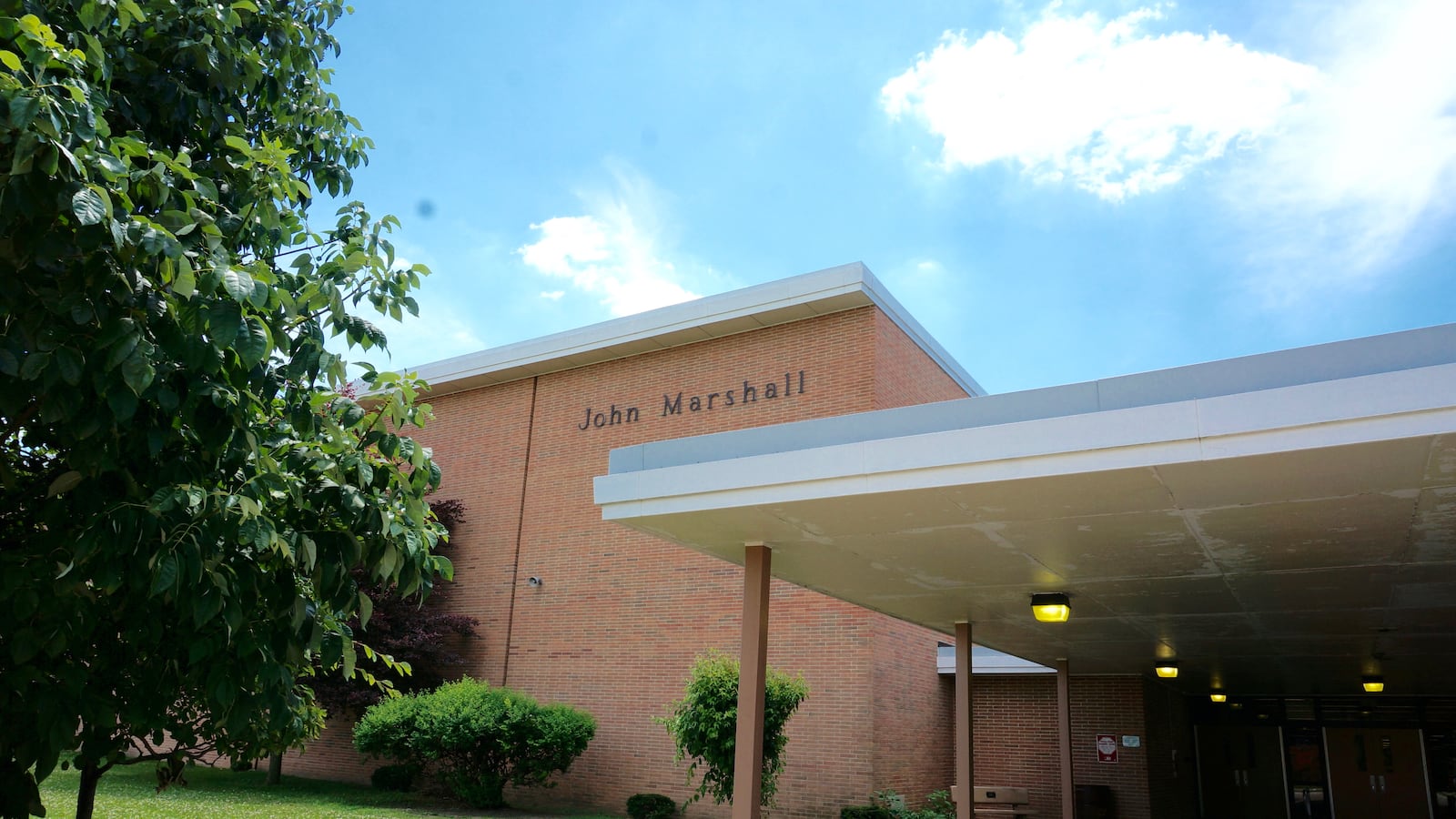With little public debate, teachers at John Marshall Middle School lost the protection of the district union.
Indianapolis Public Schools and union leaders disagree about how it happened, but the impact is clear. The principal at Marshall will be able to fire teachers more easily — and pay them thousands of dollars more than teachers at other IPS schools.
District leaders used a little-known provision of state law to remove the union from Marshall as part of a plan to improve the school that was approved by the Indiana State Board of Education in April. The school is one of several in the district’s transformation zone, which offers extra resources and coaching, but it is the only school in the zone without a union.
In recent years, teachers at several IPS schools have lost union protection when schools were converted to innovation status. Those schools are managed by outside nonprofit or charter partners, who employ the teachers directly. Marshall, however, is the first IPS-managed school where the union has been removed.
“You hate to use the word ‘union busting,’ but I mean, that’s kind of what it is,” said Rhondalyn Cornett, president of the Indianapolis Education Association. “You are taking a voice from teachers.”
The move went unnoticed by Cornett when the district got approval from the state to add Marshall to the transformation zone and remove the union. But she learned about it this summer from a teacher who applied for a job at Marshall and was told she would not be represented by the union, Cornett said.
School district leaders said the move is sensible and that they told the union before winning state approval.
IPS Board President Mary Ann Sullivan was surprised that the plan to remove the union from Marshall is not more widely known.
“It’s certainly in the agreement,” Sullivan said. “If you are the representative of the bargaining unit, and you are unaware of something like that happening, I can’t offer an explanation for that. … I don’t see how that’s our fault.”
Nearly everyone agrees that Marshall needs help: The school has struggled for years with dismal test scores and failing grades from the state. In a sign of how little community support Marshall has, a meeting last week about closing the school lasted less than seven minutes. And middle schools are often harder to staff no matter their reputation.
In fact, IPS officials said they wanted to pay teachers more, which is why they did not want to be bound by the district’s negotiated pay scales.
The district is trying to attract teachers to Marshall with the promise of thousands of dollars in extra pay. An email the administration sent educators in May offers math teachers $7,000 and science and English teachers $5,000 to transfer to the school.
That’s one reason IPS school board member Venita Moore, who represents the neighborhood around Marshall, thinks it makes sense for the school to operate without a union. The extra pay is an important incentive to encourage teachers to stay at the school given all of the changes Marshall has been through, she said.
“It is not the direction that the district as a whole is moving towards,” she said.
Moore said that she wants to work with the union so that it can change over time to fit the new, less centralized structure for the district.
Marshall was added to the transformation zone in a bid to improve its chronically low test scores. The transformation zone, which is run by the district with the help of an outside partner, aims to improve schools with an influx of coaching and other resources. IPS began its transformation zone two years ago, and it now includes eight schools.
An often overlooked provision of transformation zone law says that when schools with three years of F grades from the state — such as Marshall — are added to transformation zones, the district can choose whether to allow a union. In its April application to the state, IPS choose to allow unions at every school in the transformation zone except for Marshall.
“The Transformation Zone model does not require recognition of collective bargaining; however, the district voluntarily agreed to recognize the bargaining unit for most Transformation Zone schools,” Superintendent Lewis Ferebee said in a statement. “Given the scope of the grade reconfiguration and change of leadership at John Marshall, the district did not exercise this option when the school was added to the Transformation Zone model.”
It’s unclear if the provision in the transformation zone law that strips teachers of their union protections has ever been used. Many teachers did not realize it was even in the law.
Tina Ahlgren is a teacher at Arlington High School — another transformation zone school on the far east side — and she has been active in pushing for district policy changes like increased teacher pay. But she had no idea that Marshall wouldn’t be part of the union until Cornett told her earlier this summer.
“I get it. It’s a hard building to staff. It’s an incredibly hard building to staff,” she said. “My concern would be, there are a lot of schools in that position of consecutive F years, so this sets a precedent that could domino to other buildings.”

